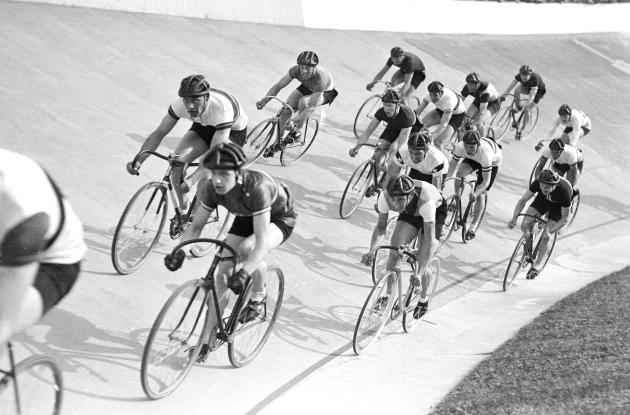The chicken farmer from Høsterkøb
From the winter track to the first Danish tour hero. We follow in the wheels of Hans Edmund Andresen. The first Danish cyclist to complete the Tour de France.
In the summer of 2022, the Tour de France riders will pass by Royal Danish Library's main Copenhagen location, The Black Diamond, in the pursuit of the yellow jersey.
Here is the story of another time's Tour de France, which we have put together from our collections of books, newspapers, pictures and much more. It is a marvellous story with poultry, bike races in the heat of Egypt and a quiet Dane, but first and foremost it is the story of how a chicken farmer became the first Dane to complete the Tour de France.
Danes in the Tour de France
- First Danish participant: Christian Christensen, 1913
- First Danish participant to complete: Hans E. Andresen, 1958
- First Danish stage winner: Mogens Frey, 1970
- First Danish winner, overall: Bjarne Riis, 1996
- First Dane in the yellow jersey: Kim Andersen, 1983
- First Dane in the polka dot jersey: Bjarne Riis, 1993
- First Dane in the green jersey: Søren Lilholt, 1988
- First Dane in the white jersey: Søren Kragh Andersen, 2018
- First Danish winner of the title as most aggressive rider, Le prix de la combativité: Chris Anker Sørensen, 2012
For me, it was a warm-up for the 6-day races.
"Of course we said yes immediately without thinking how hard it would be. For me, it was a warm-up for the six-day races", said Hans Edmund Andresen in an interview with Ekstrabladet on 9 July 1995.
He commented on his participation in the Tour de France in 1958. An event which, from a Danish perspective, was to become historic. He is also the example of a piece of Danish cycling history, namely the Copenhagen winter track and not least the six-day races in the 1950s. They were an essential part of his life as a professional cyclist. It is also here that we find Hans Edmund Andresen most in our collections, because at that time, the six-day races received far more attention than the Tour de France in Denmark.
Hans E. Andresen became the first cyclist to complete the French Grand Tour, but he was not the first to participate. Already in 1913, the race had had its first Danish element, Christian Christensen. A Danish dairyman who lived and worked in Cherbourg in Normandy with his French wife.
Christensen never got through the hardships. He drove incorrectly on the penultimate stage of the race, and did not reach the finish line within the time limit. It must be said, however, that in a show of good sportsmanship, he still rode the last stage to Paris, even though it did not count in the results list.
There were to be two world wars before any Danes tried again. The world had changed, and cycling began to really boom after World War II. In general, sport came to fill more and more of the media picture, and TV was soon to be added as well.
French TV had already aired live broadcasts from the velodrome at the Parc des Princes in Paris. The bike track was the final stage of the tour for many years. In 1958, a mountain stage was transmitted for the first time.
The chicken farmer in Forum
Hans E. Andresen became the first Dane to complete the Tour de France, but it started much more modestly.
"We had bought a house and got twenty chickens and a rooster with the purchase. When Hans came home from Egypt, he exchanged the transistor radio for twenty chickens and one more rooster, and then we suddenly had 2,000 chickens and 400 laying hens," Mrs. Birgit Andresen told Ekstrabladet in 1995. The exchanged transistor radio was won during the Tour d'Egypte.
It was perfectly normal for amateur cyclists to be rewarded with material luxuries. It could be a radio, or it could be spare parts for the bike. But it did not feed the family, as Hans Andresen found. He gladly traded several of his prizes.
"We amateurs were barely allowed to talk to a professional before we were excluded, and if they had found out, I would have been thrown out", he commented to Ekstrabladet, referring to the sharp divide between the amateur sport, which at home still followed the pure Olympic ideals, in contrast to the professional athletes.
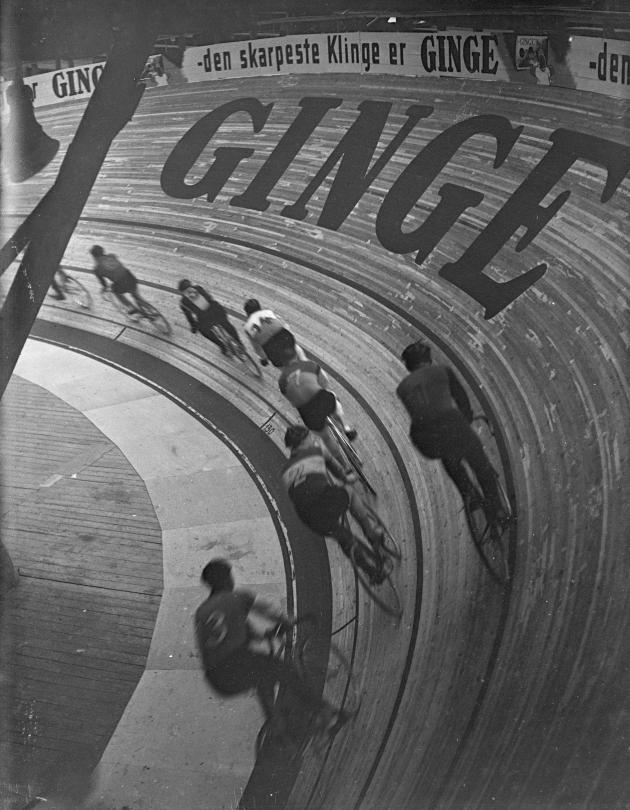
Photo: Sven Türck
In 1956, Andresen received his professional license, and it was the winter courses that became his sports-related source of income. Track cycling was at this time the only opportunity to become a professional cyclist in Denmark.
The winter track in Forum in Copenhagen was opened in 1951 and offered a number of different events, most often with prominent riders from the major cycling nations such as the Netherlands, Belgium and France, in addition to the major tributaries - the 6-day races. Andresen, for example, joined up with the three times Belgian world champion and sprinter king from the country roads, Rik van Steenbergen.
He brought with him a dossier that covered two Olympic participations in 1948 and 1952, Danish champion on the road and a 2nd place in the amateur race at the World Cup in 1954.
There was an atmosphere and party in Forum with thick clouds of tobacco smoke, and it was the speaker at the 6-day race who gave him the nickname "The Chicken Farmer". On the whole, it was at the Copenhagen winter track that Andresen really established his status as a cyclist. However, he never managed to win the race in Copenhagen or become part of the legendary pair number 7, which became a tradition in the 1950s.
Andresen was one of several Danish cyclists who became professionals during these years, and they began to go abroad more and more to try their hand at the professional sport. Although in a European context - and especially in relation to the Tour de France field - they could at best be described as semi-professional.
They could make money on their sport, but only a pittance, and most of the time they also had to support themselves with civilian jobs on the side.
Hans E. Andresen
Born: 3 October, 1927
Died: 7 February, 2014
Merits:
- Danish champion in road cycling 1950 and 1955
- Nordic champion in road cycling for teams 1951
- Tour d'Egypte 1955
- No. 2 for the World Championship in road cycling for amateurs 1954
- Participated in the Olympics in London 1948 and Helsinki 1952
- Tour de France: 1 participation (overall ranking: 62)
The Tour of 1958
Together with three other Danes (Kaj Allan Olsen, Fritz Ravn and winter track buddy Eluf Dalgaard), Hans E. Andresen had ridden the stage race Tour de Suisse in 1957. On an internationally composed team. They had reaped nice results along the way, and the Tour de Suisse was considered a kind of trial and miniature edition of the Tour de France.
With the help of the winter track leader Jørgen Beyerholm, and editor of the magazine "Cykle-Jul", and his contacts in the professional cycling environment, the four Danish riders became part of the international team in the Tour the following year.
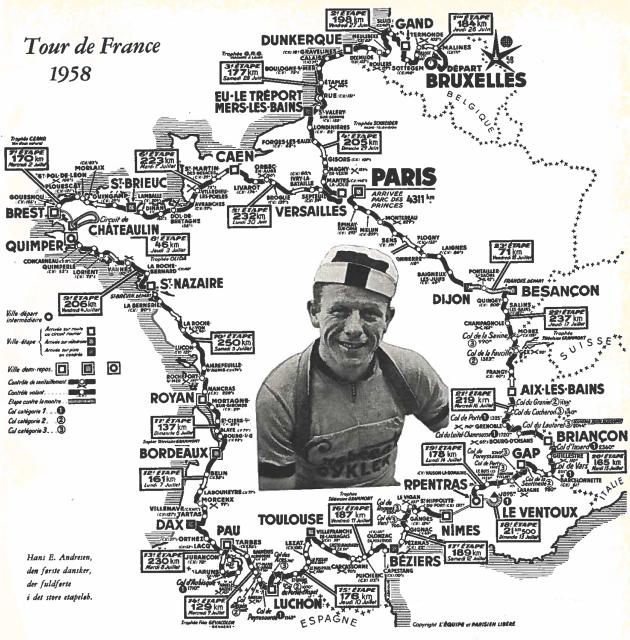
Photo: Cykle-Jul, 1958
The team also consisted of Portuguese, Irish, and Austrian riders, and Brian Robinson, among others, who would soon become the first British stage winner in Tour history. In 1958, the riders rode on national teams as a starting point. Not in company-sponsored teams as we know it today. Each team consisted of 12 riders, today it is eight.
The four Danes stood up under modest conditions. Only a few extra bikes on a truck. Andresen had two bikes and, unlike the other riders, used the same equipment for both regular stages and individual time trials. They were given a single escort car with a soigneur, the Dutchman Piet van der Heyden, and a Danish coach, Henry Pedersen.
"He was given a random place in a service car, but we did not have radio contact, so he did not always see me. That's why I drove with a ring around my neck, so I could change tires myself ", Andresen reported in 1995.
The assistant van der Heyden described in a personal report to the magazine Cykle-Jul (1958) the anguish that afflicted the Danes from the beginning. In addition to lacking routine in this type of stage race, they were simply in bad shape, and seemed unprepared for the race. They were behind from the beginning.
There was not overwhelming optimism at home either. Aftenbladet (Copenhagen), which was one of the newspapers that covered the tour most closely in 1958, was published on 26 June with this headline:
The big question is how long the four Danes will last.
Not very long, the answer immediately resounded from the French. Already on the first stage (Brussels - Ghent) Fritz Ravn had to capitulate. He suffered punctures and a defective chain, and was overlooked by the team's service car.
Left to himself and his own repair kit, he did not reach the finish line within the time limit.
In the fifth stage, Dalgaard had to capitulate. "I've had enough, I can no longer!", he said to Aarhus Stiftstidende on 1 July, 1958. After a stage that had been run in pouring rain and at an insane pace.
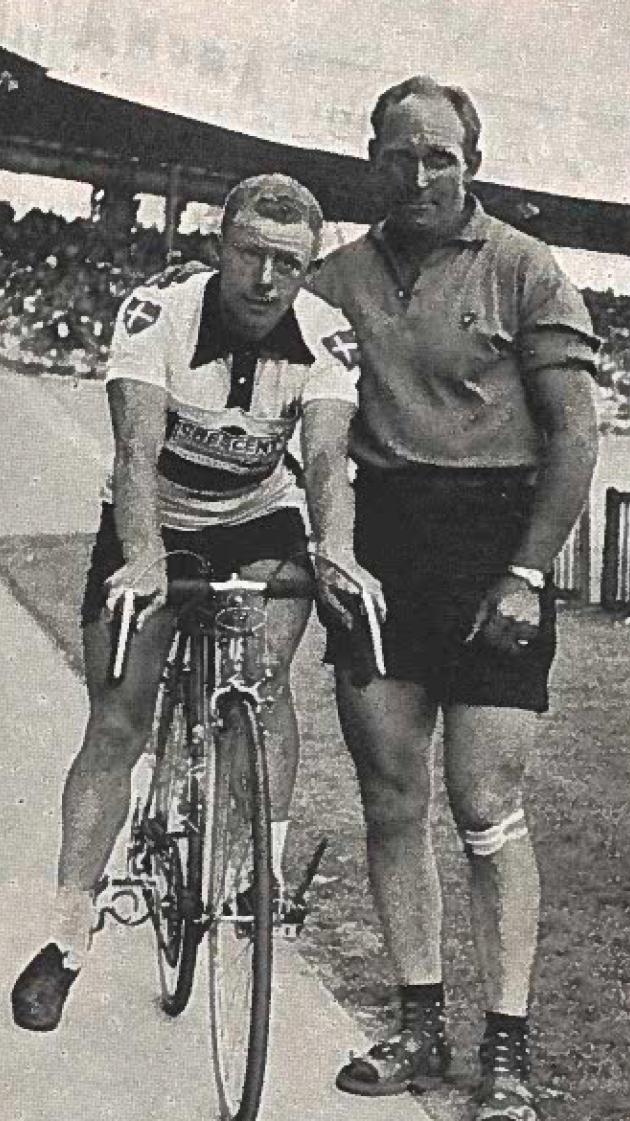
Photo: Cykle-løb, 1958
In the same breath, Dalgaard described the constitution of the Danish participants: “We have not even trained at the speeds that the field reaches when trying to catch up with the breakaways. We feel almost like small tourist cars that have to keep up with large racing cars.”
"I feel more comfortable in the race than before - but it still goes too fast for me…", added start number 129, Hans E. Andresen, honestly the next day in Aftenbladet.
It gets better and better
The two remaining Danes fought on. Ahead lay the Pyrenees. Not exactly familiar terrain for them. Andresen was a small, densely built man, 169 centimetres tall and 74 kilos heavy, a typical sprinter stature. But to the surprise of most, he got better and better. He hung at the heavy end of the field and barely dared to stop for a pee, as the newspaper "France Soir" wrote. But what he lost on the climbs, he often managed to drive in again on the descents.
Kaj Allan Olsen, on the other hand, struggled with a busted wrist after a fall. When the field seriously hit the mountains on the 15th stage, he capitulated and did not reach the finish line within the time limit.
The chicken farmer, from the Forum's winter course, fought alone in the French summer. Last brave Dane left, you could almost hear the iconic Gunnar Nu Hansen's voice from the 6-day races.
It all culminated for Andresen on the 17th stage. He finished in 5th place and was discovered by the large crowd that followed the race. Also on the home front, attention grew considerably. From Denmark he received encouraging telegrams and his Swedish bicycle sponsor promised a bonus of 1,500 kroner if he completed and reached Paris.
Thousands encourage the lonely Danish rider.
Probably a huge encouragement for Andresen. After surviving the mountain individual time trial on the Mont Ventoux, he pointedly told Aftenbladet on 14 July, 1958:
"They all wanted to give me something to drink, but I did not dare accept the offers. I was afraid it would make my knees soft, so I waited to quench my thirst afterwards. ”
The 1958 Tour de France consisted of a total of 24 stages. The riders got no rest days back then. The race was finally settled in a violent storm in the Alps. With snow and hail. The Luxembourger, Charly Gaul, made a historic comeback and turned the race on its head as he picked up more than eight minutes on his closest competitors. The big pre-favourite, Frenchman Jacques Anquetil, dropped out with pneumonia along the way.
There is an end to Paris
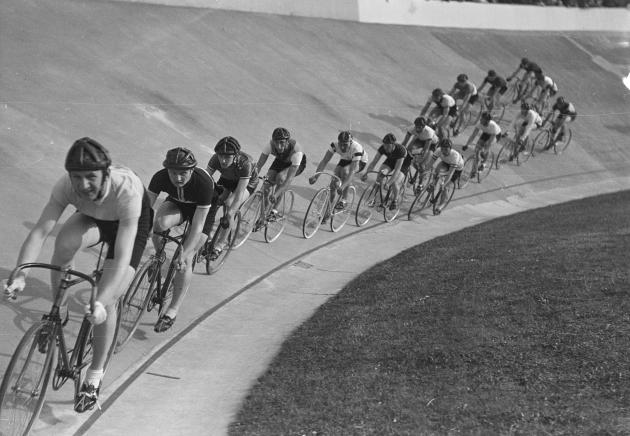
Photo: Sven Türck
On 21 July, the field consisting of 78 riders,120 at the start, drove into Paris after the final stage of the race. The finishing line was at the velodrome at the Parc des Princes.
“At first I could not stand the French red wine, but gradually we got used to it, and eventually I even liked it. The food was what I was most looking forward to all day - you definitely sleep well after a stage and a litre of red wine on top", Andresen laughed in Ekstrabladet in 1995 and emphasised again that he had not been prepared for the hardships of the race at all. In 24 days he lost six kilos.
Andresen drove into the old velodrome at the Parc des Princes as number 62 in the final classification. 40,000 spectators received the riders in Paris, and the newspaper "France Soir" made its own tribute article to the grieving man, "l'homme triste". The first Dane to complete the Tour de France.
You definitely sleep well after a stage and a litre of red wine on top.
The French noted that Andresen had great difficulty communicating with both the other riders in the field and the journalists. Due to lack of French skills. The least talking rider in the field, noted the French newspaper. Enclosed in silence, he eventually drove with a single ambition: to complete and get home to the family.
He succeeded. The chicken farmer from Høsterkøb became a small piece of Danish Tour de France history.
On the home front, the business had not gone unnoticed either. 8,000 spectators showed up at the old bike track in Ordrup to pay tribute to the first, real Danish tour hero.
It would take more than 10 years before a Dane completed the Tour de France again.
Do you want to know more
Royal Danish Library and probably also your local public library is full of books on cycling and the Tour de France, but which one should you choose? Here are some of our recommendations - much of it is in Danish, though. You can order them from us by following the link or at your nearest public library by searching at bibliotek.dk
Den gule trøje i de høje bjerge, 1996 - Jørgen Leth, 1996
Captivating stories and snapshots of major showdowns and profiles in Tour de France history, especially the 1990s.
Sumptuous photographs from the Tour de France over the last 20 years with comments from the greatest riders. Les forcats de la route - Albert Londres, in Danish 2019
Legendary reports from the Tour de France 1924 by the father of the journalistic report. A breathtaking tale of inhuman suffering, exploits and insomnia.
Riis - Bjarne Riis and Lars Steen Pedersen, 2010
Very honest portrait of the only Danish winner of the Tour de France. About great victories, sports-related and personal deceptions and defeats, about a great career as both rider and team owner.
Tour de France - Verdens hårdeste cykelløb - Joakim Jakobsen, 2021
Comprehensive overview of Tour de France through over 100 years with large illustrations. Beautiful and remarkable events combined with hard facts about the race year after year.
